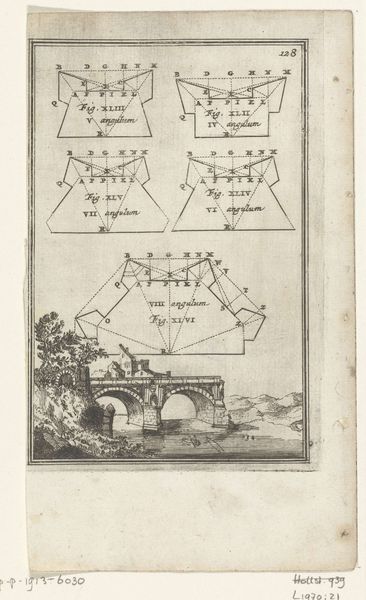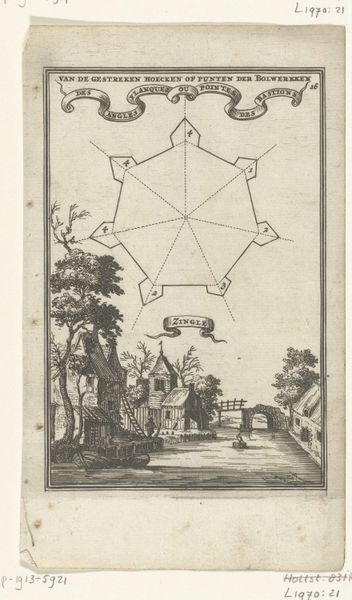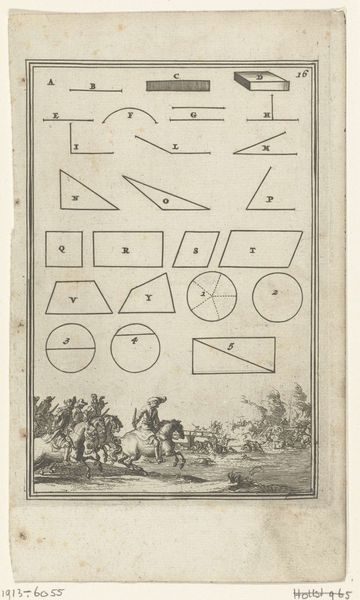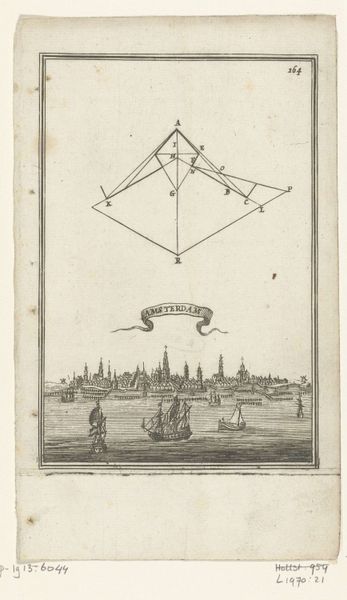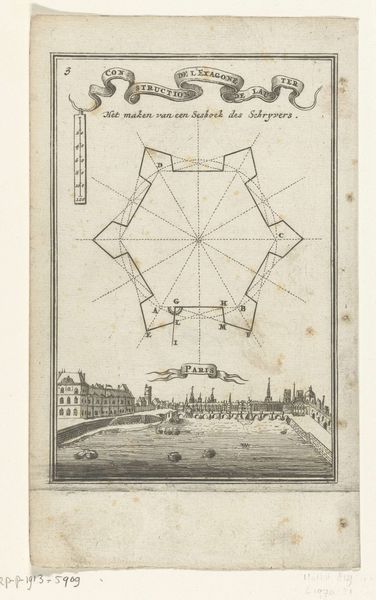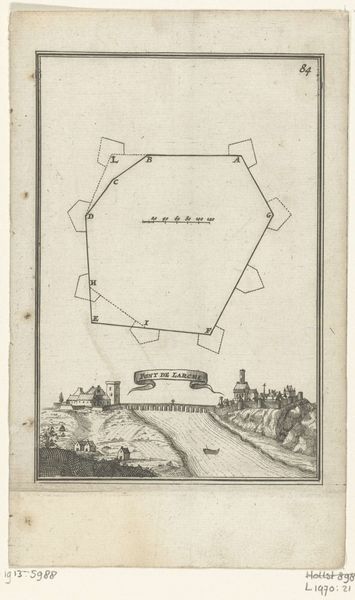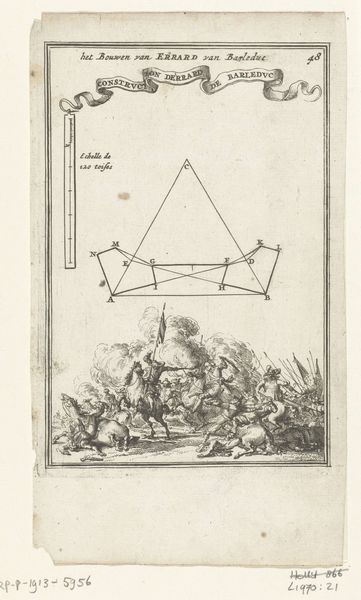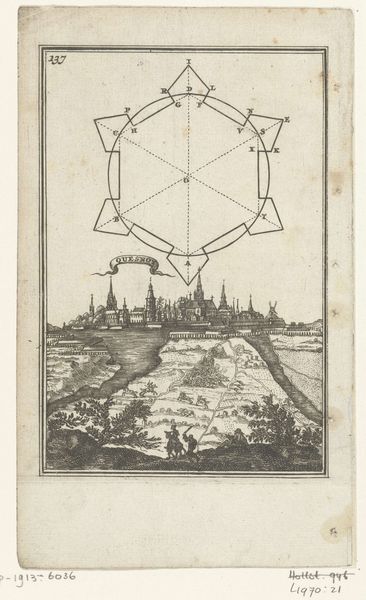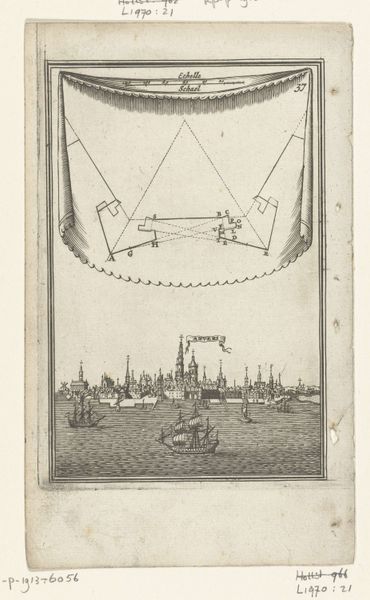
Illustratie voor 'Den Arbeid van Mars' van Allain Manesson Mallet 1672
0:00
0:00
romeyndehooghe
Rijksmuseum
print, paper, ink, engraving
#
baroque
# print
#
landscape
#
paper
#
ink
#
geometric
#
line
#
engraving
Dimensions: height 184 mm, width 111 mm
Copyright: Rijks Museum: Open Domain
Curator: This is an illustration crafted by Romeyn de Hooghe around 1672, an engraving rendered in ink on paper, now residing here at the Rijksmuseum. It served as an illustration for 'Den Arbeid van Mars' by Allain Manesson Mallet. Editor: My immediate reaction is that this work blends the technical and the evocative. It feels like a blueprint overlaid onto a dreamscape. The stark geometric shapes contrasted with the crumbling ruins create a powerful visual tension. Curator: That tension speaks volumes about the period. This was an era obsessed with order, control, and the scientific gaze, attempting to rationalize the world even as the remnants of past glories—often tied to conflict and empire—were ever present. Consider the implications of "Mars," the god of war, connected to labor. Editor: Yes, and notice how those geometric forms, these rational diagrams, sit almost uncomfortably above that lower register, above that evocative landscape, suggesting the imposition of a calculated order. But the ruins, with their moss-covered stones and fractured walls, hold their ground. What did those symbols of geometric calculation stand for at that time? Curator: Think about mapping, navigation, and military strategy in the 17th century. These shapes weren't merely abstract. They represented the tools with which territory was claimed and controlled. The image evokes a sense of mastery over the landscape, literally imposing geometry on nature, and perhaps alluding to strategies and logistics of the time, suggesting colonialism. Editor: Absolutely. There's an underlying suggestion about power, the visual lexicon speaks to the ambition of structuring, classifying, and dominating both physical space and conceptual space through the visual. That carefully rendered horizon line—a visual gateway. Curator: And consider, too, that De Hooghe, while celebrated for his skill, was working within a deeply unequal power structure. This piece then acts not merely as a neutral depiction but as a document, or even perhaps a small form of propaganda, reflecting the socio-political realities of the time, making visual both knowledge and the deployment of knowledge for sociopolitical reasons. Editor: I hadn’t thought of it as propaganda, but I understand that—to depict power you have to represent it in clear terms that people can identify with, creating something both didactic and accessible. Seeing the ways such rational designs are imposed is particularly revealing to our current cultural context of AI. It resonates in an unsettling way. Curator: It’s precisely this intersection of historical technique and modern reflection that make such art worth preserving and engaging with. Editor: Indeed. I'll certainly view such calculated projections in landscapes differently moving forward.
Comments
No comments
Be the first to comment and join the conversation on the ultimate creative platform.


